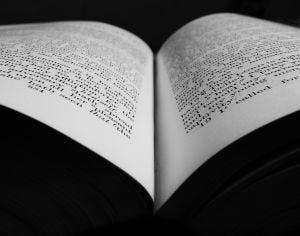When Narrative Summary Takes Over a Novel
I’m reading a novel I can’t tell you about. This sounds way more glamorous and mysterious than it really is. I’m judging a contest for a…
I’m reading a novel I can’t tell you about. This sounds way more glamorous and mysterious than it really is. I’m judging a contest for a group I belong to and so I can’t reveal details. The novel has a pretty good story line, some well-drawn characters and a compelling theme.
And yet I am struggling with everything I have to finish it.
Why?
Because it is mostly written in narrative summary. And while narrative summary is a handy tool, when used too much it becomes boring.
Remind Me About Narrative Summary?
Let’s do a quick review. Here’s a definition of narrative summary:
Narrative is made up of summary, and description. It is broadly known as telling. Narrative compresses or expands time — for instance, gliding over years in a paragraph. There’s no action in it, only descriptions of action.
That bit above about there only being descriptions of action is key. I’m sure you can imagine how page after page of that gets draining. This is why we put action in scenes, people. Because it is more immediate, more engaging, more, well, dramatic. And it is a lot more fun to read.
Speaking of fun, I thought it might be useful to read some reviews of this book. While many of them are positive, focusing on the things I like about it, too, many others are not. They say things like “boring” or “flat characters” and so on. These aren’t professional writers who are doing the reviewing so they don’t quite have the words to explain why the book isn’t doing it for them.
But I do: too damn much narrative summary.
And Then There Are Scenes
Of course, you can go too far in the other direction and write too many scenes as well. (Though in all the gazillion manuscripts I’ve read over the years, I’ve only seen this happen once. Most of the time I’m imploring writers I work with to write more scenes.) The trick is knowing when to use each one. In the broadest of fashions, you can think of scenes as showing and narrative summary as telling and use accordingly.
We probably don’t need to see your character on her daily run to the grocery store — unless she meets the love of her life there one day. You can dispense with her trip in one sentence: Delilah went to the grocery store. But if she does meet the love of her life there, that’s when you put it into a scene. A scene occurs in real time, and contains dialogue and action. It could theoretically be acted out, though many scenes contain interior monologue as well.
The Middle Ground
The best novels, in my opinion, use a combination of scene and narrative summary, with the ratio canting in favor of scenes. If someone has critiqued your story and mentioned that things drag in places, examine those spots and see if you’ve got too much narrative summary going on. Is there something you can put into a scene?
The smart use of narrative summary and scenes can help you in pacing. You might utilize more scenes and fewer summaries as you near the exciting conclusion of your novel, for instance. Or you might use a lot of narrative summary as you’re familiarizing the reader with a character at the beginning. Just aim for a balance.
Okay, that’s my rant on narrative summary. Please do share with me your thoughts.




